COTS and Lead Free – Dealing with the Quandary
- Posted by Liam Murphy
- On December 3, 2019
- 0
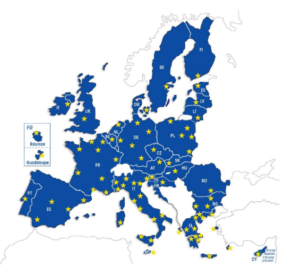 Introduction – REACH 1/3
Introduction – REACH 1/3
Main purpose is to
ensure a high level of protection of human health and the environment
in relation to the use of chemical substances.
Introduction – REACH 2/3
Registration, Evaluation, Authorisation and Restriction of Chemicals
• Addresses potential impacts of chemicals to human health and on the environment
• And production & use of chemical substances.
Strictest law to date regulating chemical substances.
• many chemical substances will face regulatory or commercial obsolescence, causing widespread impacts to downstream users.
Very desirable and ambitious regulation to contribute to a safer and healthier environment but causes wide-reaching engineering and management challenges for the space sector which is by nature driven by performance and heritage design.
Introduction – REACH 3/3
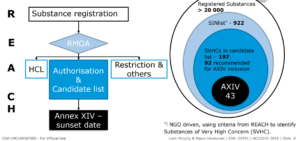
Example timeline of REACH authorisation (Pb)
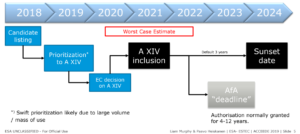
Joint Working Group for Pb-free transition
During 2019, ESCC CTB and MPTB have formed a joint working group that has the following goal:
- In the domain of EEE components, electronic assembly technologies and PCBs, ensure a successful industry-wide transition to a Pb-free technology while preserving or improving current level of quality and reliability, including but not limited to:
- Tin-whisker mitigation and risk assessment
- Lead-free solders and assembly processes
- Accelerated tests for verification of Pb- free materials and processes and qualification of components, and
- Acceptance criteria for Pb-free materials, processes and components
- Objectives: Identify the necessary activities and objectives, with
- measurable outcomes indicating successful completion (e.g. TRL),
- including schedules and budgets,
- and their interconnections and dependencies.
- To form a lead-free transition plan composing of:
- Materials and EEE parts selection
- Supplier compliance and guidelines for procurement
- Changes in assembly processes
- Reliability assessment and key reliability risks in lead-free electronics
So…..Why are there Concerns?
New materials and processes replacing known and trusted technologies.
So…..What are the Questions?
- Examples:
- Metals:
- Tin Pest & Tin Whisker
- Oxidation and Dendritic growth
- Dendrite growth, metallic migration etc.
- Corrosion, Intermetallics, Oxidation, Delamination etc.
An Example
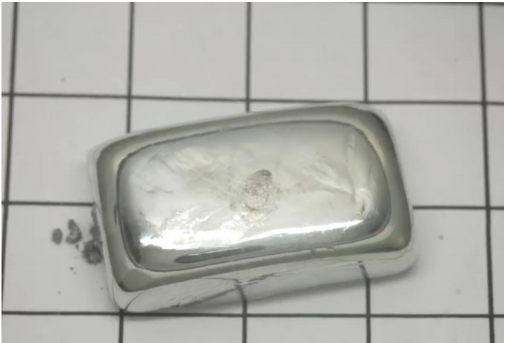

Tin Pest is a self initiating autocatalytic, allotropic transformation of tin, which causes deterioration of tin objects at low temperatures (starting around -13).
Another issue
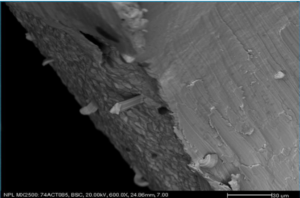
Tin Whisker
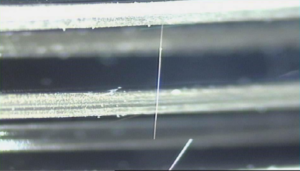
Whisker Spontaneous growth
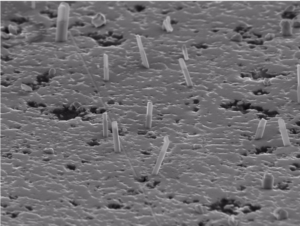
So ?
So what if we get whiskers?
They will just blow out like a fuse!
Not necessarily!
In Vacuum things change.
Hi energy / Large currents Will explode / vaporize a fine short circuit
Low energy / small current?
Will not necessarily cause a failure –
the short circuit element could just get hot!
Simple filament
Set up
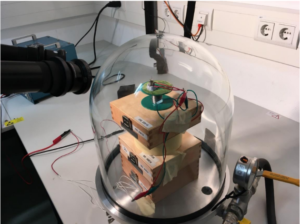
+ Vacuum
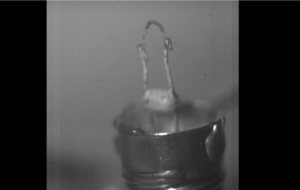
And rememeber:
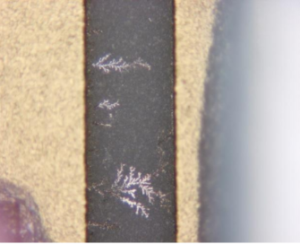 Dendrite Growth risks
Dendrite Growth risks
- Dendrite growth is the flow of Ions in a conductor, due to potential difference between 2 conductors.
- Described as an Ionic migration, it occurs below 100 Degrees C in moisture conditions.
- Materials affected include Silver, Nickel, Palladium etc. In fact any anodoically soluble metal (requiring low initiating activation energy)
- Known to grow on substrate surfaces, component surfaces, in cracks in capacitors and even Nickle dendrites in cracked glass feed through beads
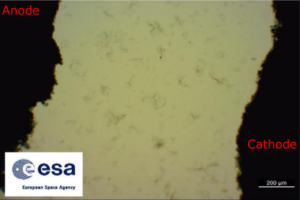
What are the Questions ?
So what about Dendrites?
Not known to occur in vacuum (flight) – only atmosphere.
Need bias and humidity (liquid or partial liquid)
Once formed they create a high impedance short.
The longer the power is on (and kept wet) the worse it gets!
They will not easily fuse!
Conclusions
From the packaging perspective:
- COTS packaging and lead free assembly bring a whole variety of new potential issues to the established market place.
- New packaging and assembly
- Very little heritage and history for flight applications
- Very little data available to the Agency on space level testing performed
- Upcoming packaging materials restrictions (RoHs, REACH)
- COTS and Lead Free – Dealing with the Quandary - December 3, 2019


0 comments on COTS and Lead Free – Dealing with the Quandary